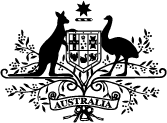Australians with types of vasculitis, leukaemia, heart disease, ulcerative colitis and arthritis now have access to new and expanded cheaper medicines under the Pharmaceutical Benefits Scheme (PBS).
Avacopan (Tavneos®) will be listed for the first time to treat Australians with certain types of rare autoimmune diseases that cause inflammation of blood vessels.
Severe active granulomatosis with polyangiitis and microscopic polyangiitis can lead to organ damage or failure, including of the lungs and kidneys.
Tavneos works by blocking a protein receptor in the immune system to help reduce inflammation in the blood vessels and improve symptoms.
This listing is expected to benefit around 360 patients each year. Without subsidy, they might pay around $71,000 per course of treatment.
Australians diagnosed with a common form of lymphoma will soon have access to a first-of-its kind treatment combination that will allow them to take daily tablets at home for 15 months and then go ‘treatment-free’ while in remission.
Ibrutinib (Imbruvica®) will be listed for use in combination with venetoclax (Venclexta®) for chronic lymphocytic leukemia (CLL) and small lymphocytic lymphoma (SLL).
Approximately 2,400 Australians are diagnosed with CLL each year.
Imbruvica works by blocking certain proteins, helping to kill and reduce the number of cancer cells and slow the spread of the cancer.
In 2023, around 900 patients accessed a comparable treatment through the PBS.
Without subsidy, patients might pay around $190,000 per course of treatment.
Icosapent ethyl (Vazkepa®) will be listed for the first time for patients with heart disease and high blood fat.
One in six Australians live with cardiovascular disease (CVD), including atherosclerotic cardiovascular disease, at some point in their lives.
CVD is a major cause of death in Australia. On average, around one person dies every 12 minutes from CVD in Australia.
Around one in three people who have had a heart attack or stroke will go on to have another major cardiovascular event in the next 7 years.
Vazkepa works to help prevent serious cardiovascular events such as heart attack, stroke and death from heart disease. It is the first reimbursed treatment to reduce the risk of a second heart attack or stroke for people with high triglycerides
This listing is expected to benefit around 10,400 patients each year. Without subsidy, they might pay around $1,800 per year of treatment.
Etrasimod (Velsipity®) will be listed for the first time to treat patients with ulcerative colitis, a condition which causes inflammation or ulcers on the lining of bowel.
Velsipity works by attaching to lymphocytes, types of white blood cells involved in inflammation, and stops them from traveling to the intestine to help reduce inflammation in the bowel.
In 2023, over 1,700 patients accessed a comparable treatment through the PBS. Without subsidy, patients might pay around $18,000 per year of treatment.
Bimekizumab (Bimzelx®) will also be expanded to include the treatment of a range of inflammatory arthritis conditions.
In 2023, over 3,000 patients accessed comparable treatments through the PBS for these conditions. Without subsidy, patients might pay around $22,000 per year of treatment.
A new high-dose eye injection will be PBS listed on 1 October for two common sight-stealing diseases – wet age-related macular degeneration (AMD) and diabetic macular oedema (DMO).
The PBS listing of Eylea (aflibercept) 8mg will mean that Australians with wet AMD and DMO will be able to have their disease controlled with fewer injections (ie. dosing intervals extended from 2 months to up to 4 months). Essentially that means that patients may require just three injections per year after the initial loading doses.
The potential benefits of receiving fewer injections (extended treatment intervals) are significant – reduced out of pocket costs, time and travel for ophthalmologist appointments; improved quality of life (and less frequent treatment anxiety); and easing of systems constraints, allowing doctors to treat more patients.
Eye injections are one of the most common medical procedures in Australia. As the population ages and diabetes becomes more prevalent, the demand for sight-saving therapies is on the rise.
Last year, around 60,000 people accessed Eylea for these conditions through the PBS.
This new listing could reduce the frequency and number of injections patients need in a year and may help reduce the burden of access to treatment.
Without the PBS subsidy, patients might pay more than $4,000 a year for treatment.
The PBS listings of these medicines means eligible patients will pay a maximum of $31.60 per script, or just $7.70 with a concession card.
Since July 2022, the Australian Government has approved extra funding for 251 new and amended listings on the PBS.
Quotes attributable to Minister Butler:
“The Albanese Government is listing new medications on the PBS, fulfilling our commitment to deliver cheaper, faster access to life-changing treatment for thousands of Australians.
“These listings are treating conditions that have a devastating impact on the health and wellbeing of patients, and that are life-threatening in some cases.
“Now, instead of paying thousands of dollars out of pocket, Australians will be able to afford these latest treatments for a maximum of $31.60 per script or just $7.70 if they have a concession card.
“Not only are these listings good for patients hip pocket, they’re also good for their health.”
Media event date:
Date published:
Media type:
Media release
Audience:
General public
Minister:
